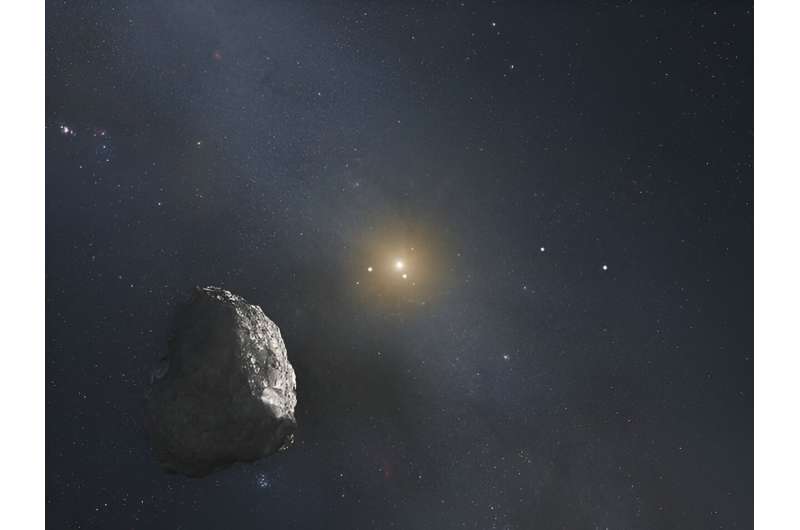This article has been reviewed according to Science X's editorial process and policies. Editors have highlighted the following attributes while ensuring the content's credibility:
fact-checked
peer-reviewed publication
trusted source
proofread
Plot thickens in the hunt for a ninth planet

A pair of theoretical physicists are reporting that the same observations inspiring the hunt for a ninth planet might instead be evidence within the solar system of a modified law of gravity originally developed to understand the rotation of galaxies.
Researchers Harsh Mathur, a professor of physics at Case Western Reserve University, and Katherine Brown, an associate professor of physics at Hamilton College, made the assertion after studying the effect the Milky Way galaxy would have on objects in the outer solar system—if the laws of gravity were governed by a theory known as Modified Newtonian Dynamics (or MOND).
MOND proposes Isaac Newton's famous law of gravity is valid up to a point. That is, when the gravitational acceleration predicted by Newton's law becomes small enough, MOND allows for a different gravitational behavior to take over.
The observational success of MOND on galactic scales is why some scientists consider it an alternative to "dark matter," the term physicists use to describe a hypothesized form of matter that would have gravitational effects but not emit any light.
"MOND is really good at explaining galactic-scale observations," Mathur said, "but I hadn't expected that it would have noticeable effects on the outer solar system."
Their work was recently published in The Astronomical Journal.
A 'striking' alignment
Mathur and Brown had studied MOND's effect on galactic dynamics before. But they became interested in MOND's more local effects after astronomers announced in 2016 that a handful of objects in the outer solar system showed orbital anomalies that could be explained by a ninth planet.
Orbital peculiarities have led to historic discoveries before: Neptune was discovered through its gravitational tug on the orbits of nearby object, the minute precession of Mercury provided early evidence in support of Einstein's theory of general relativity, and astronomers have recently used orbital dynamics to infer the presence of a supermassive black hole at the center of our galaxy.
Brown realized MOND's predictions might be at odds with the observations that had motivated the search for a ninth planet. "We wanted to see if the data that support the Planet Nine hypothesis would effectively rule out MOND," she said.
Instead, Mathur and Brown found MOND predicts precisely clustering that astronomers have observed. Over millions of years, they argue, the orbits of some objects in the outer solar system would be dragged into alignment with the galaxy's own gravitational field.
When they plotted the orbits of the objects from the Planet Nine dataset against the galaxy's own gravitational field, "the alignment was striking," Mathur said.
The authors caution that the current dataset is small and that that any number of other possibilities might prove to be correct; other astronomers have argued the orbital peculiarities are the result of observational bias, for example.
"Regardless of the outcome," Brown said, "this work highlights the potential for the outer solar system to serve as a laboratory for testing gravity and studying fundamental problems of physics."
More information: Katherine Brown et al, Modified Newtonian Dynamics as an Alternative to the Planet Nine Hypothesis, The Astronomical Journal (2023). DOI: 10.3847/1538-3881/acef1e
Journal information: Astronomical Journal
Provided by Case Western Reserve University




















